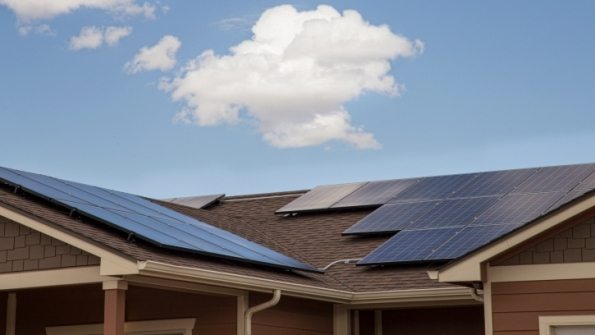Explainer: Solar inverters play a brand new, necessary function – are you impacted? – One step from the community
With the introduction of new standards due to come into effect on December 18, 2021, the power grid operator AEMO aims to leverage the collective capabilities of inverters through new operational settings to help manage and secure the power grid and distribution grids.
Do I have to update my existing inverter?
If you have already installed solar it will not affect you as this only applies to inverters installed after December 18th. However, if your inverter stops working and needs to be replaced, a compatible inverter is required.
If you want to apply to install a system after December 18, you are the new owner of an inverter with more skills than its older brother, helping to keep the lights on and providing stability and flexibility to the power grid that will accommodate more and more solar systems. However, you will not operate the controls; they will be configured in the prescribed settings.
If an inverter is not compatible, it cannot be installed by the Clean Energy Council or your network service provider.
The standard also applies to electric vehicles when they export energy to the grid.
Why are inverters being upgraded?
Over 2.5 million or around 25% of households have solar energy with a total output of over 13 gigawatts. In fact, decentralized solar power combined is the largest generator on the market and is growing rapidly – around 30,000 new solar systems are installed and added to the NEM every month.
Every PV system pumps a load of electricity into the local grid during sunny production periods (unless all the energy generated is used on site) – this must, however, be balanced with the amount of electricity consumed at that time.
At peak times of solar energy, if there is little demand, the collective inflow of solar energy can increase the voltage and frequency in the local grid beyond the permissible parameters set in solar inverters. This causes them to throttle their output or disconnect.
PV systems in some areas can experience this only a few times a year with negligible impact. Keep in mind that a 6 kW system could save its owner $ 3 a day. However, if an overvoltage occurs frequently on a local grid, the inverters may operate under capacity for a significant part of the year, resulting in greater losses.
And when the grid voltage is high, more electricity is used to power devices in households in the affected area, increasing energy costs and potentially causing damage to devices.
Other disruptions in the grid, such as the shutdown of a coal-fired power plant or a high demand for electricity, which leads to a lower voltage and frequency, can cause inverters to trip and shut down. If the frequency drops too much, solar inverters and other power plants can shut down one after the other in a cascade effect, resulting in a power outage.
The inverter is the brain of your solar system. Its core function is to convert the direct current (DC) from the solar panels into alternating current (AC) that can be used in the home and on the grid. However, inverters are also equipped with intelligent communication, monitoring and control functions. The new standards from AEMO use these with prescribed operating settings to react to conditions in the power grid that could otherwise lead to power outages, poor power quality or the triggering and shutdown of PV systems.
Will the changes increase the costs of a solar system?
According to Rod Dewar from Fronius, the changes will have no impact on the cost of their inverters for consumers.
What are the new standards doing?
The new settings and requirements will:
– Allow inverters to drive through multiple grid disturbances to keep them connected and delivering power, or disconnect to prevent a major event.
– Improve the quality of electricity in your home or business.
– Provision of grid support functions that allow more solar, battery and electric vehicles to be connected to the grid;
– Improve the accuracy of the measurements on the meters that monitor the inverters to ensure that they respond correctly to different conditions. and
– Improve testing procedures to ensure the inverters are compatible.
The new inverter standard also requires that the DC isolator be integrated into the inverter instead of being mounted externally.
Fronius’ Rod Dewar says this is a good thing as the inspectors no longer have to check that the isolator installation is compliant. He also says, “In general, it’s safer because the system has fewer DC links. Every connection is a potential point of failure, which reduces the risk. “
Will the government shut down my solar system?
Don’t combine these changes with South Australia’s 2020 rule, which allowed inverters to be turned off remotely in an emergency.
In all other states of the NEM there are no new requirements for inverters so that inverters can be switched off remotely. The rule change in SA was made because renewable energies have much higher market penetration. An AEMO representative told One Step Off The Grid that this has been identified for consideration in future work.
Should I have the firmware of my old inverter updated?
You don’t have to do this. However, Fronius’ Rod Dewar says that some inverters can be upgraded on-site or online, but this is location-dependent.
“If you are at the end of a line or if there is high voltage and the system is very old, the current trip limits are higher,” he said. “However, if they move to the lower trip limits, their production could decrease. If this is not an affected area, upgrading may be an option. “
The benefit of upgrading to the owner is that it ensures that the system stays online in the event of a failure. However, this is unlikely.
Should I be rewarded for using my new inverter to balance the grid?
With these new standards, inverters play a much more active role in balancing generation and load in the grid so that it works safely.
Generators such as coal and gas power plants have traditionally been paid for by the network operator AEMO to perform this function via the FCAS (Frequency Control Ancillary Services) market. FCAS offers fast energy feed or fast energy saving to manage supply and demand.
James Sturch, RoW (Rest of World) Technical Director at SolarEdge Technologies, said, “Millions of consumer-owned inverters are doing a job to support the network and aren’t getting paid.” He admits that most owners are well aware of the situation would not be aware, however, says, “It raises some ethical questions from the point of view of justice.”
For more information, see the Energy Insiders Podcast: Why Inverters Are Key to a Renewable Power Grid.


Comments are closed.